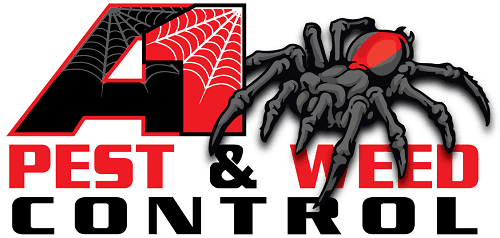Cockroaches In Australia: A Comprehensive Guide
Introduction to Cockroaches: Basic Anatomy and Characteristics
Cockroaches are a type of insect that belongs to the order Blattodea, which also includes termites. They have a flattened, oval-shaped body and six legs that are equipped with spines for running. Cockroaches are known for their ability to adapt to a wide range of environments and are found in many parts of the world, including Australia.
The Different Types of Cockroaches: A Guide to Common Species In Australia
Several species of cockroaches are commonly found in Australia, including:
Australian Cockroach
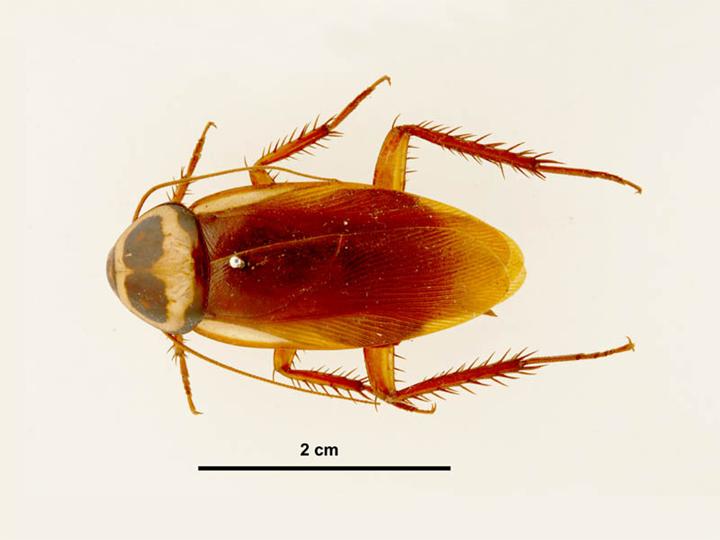
This species is native to Australia and is typically found in tropical and subtropical regions. Australian cockroaches are reddish-brown in colour and have a wingspan of about 3.5 cm.
Read More About The Australian Cockroach
Brown Banded Cockroach

This species is native to Africa but has been introduced to many parts of the world, including Australia. Brown-banded cockroaches are small and brown in colour, with distinctive bands on their wings.
Read More About The Brown Banded Cockroach
Smoky Brown Cockroach
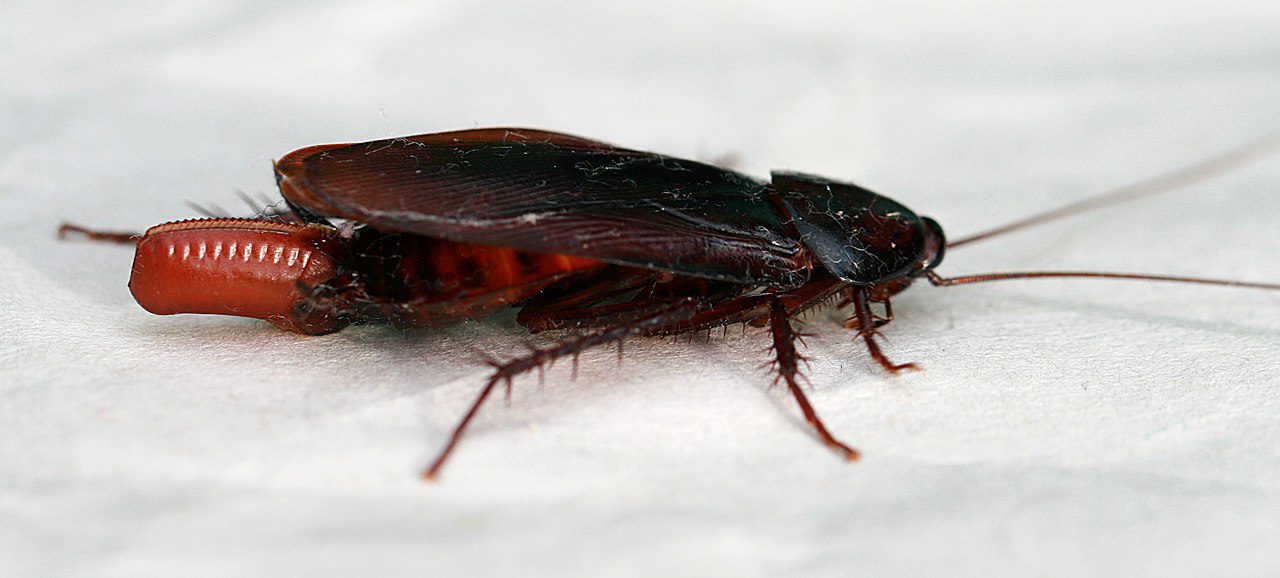
This species is native to Asia but has been introduced to many parts of the world, including Australia. Smoky brown cockroaches are dark brown in colour and have a wingspan of about 4 cm.
Read More About The Smoky Brown Cockroach
German Cockroach
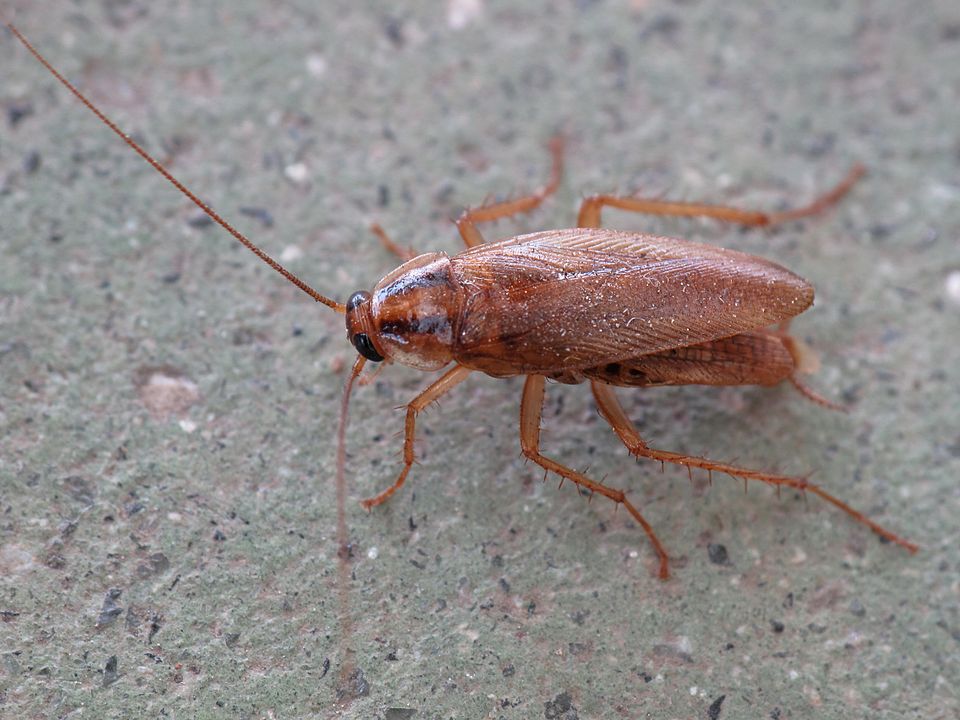
This species is native to Europe but has been introduced to many parts of the world, including Australia. German cockroaches are small and light brown in colour, with two dark stripes on their thorax.
Read More About The German Cockroach
American Cockroach

This species is native to the Americas but has been introduced to many parts of the world, including Australia. American cockroaches are reddish-brown in colour and have a wingspan of about 7.5 cm.
Read More About The American Cockroach
Oriental Cockroach

This species is native to Asia but has been introduced to many parts of the world, including Australia. Oriental cockroaches are dark brown in colour and have a wingspan of about 3.5 cm.
Read More About The Oriental Cockroach
The Habitats of Cockroaches: Where They Live and Thrive In a Commercial Environment
Cockroaches are highly adaptable and can be found in a wide range of habitats, including homes, apartments, restaurants, hospitals, and other commercial buildings. They prefer warm, moist environments and are often found in basements, crawl spaces, and other areas that are dark and humid. Cockroaches are also attracted to food and will often infest areas where food is stored, prepared, or consumed.
What are the signs of a cockroach infestation?
Several signs may indicate the presence of a cockroach infestation, including:
- Sightings of live or dead cockroaches: Cockroaches are nocturnal and are often seen at night, particularly in areas where food is stored or prepared.
- Droppings: Cockroaches produce small, cylindrical droppings that are dark in colour and may be found on surfaces near their nesting sites.
- Odour: Cockroaches produce a musty, unpleasant odour that may be noticeable in areas where they are present.
- Egg capsules: Cockroaches produce egg capsules that contain several eggs and are often found in hidden, protected areas.
- Damage to food packaging: Cockroaches may chew on food packaging and leave behind small holes or tears.
- Shells: Cockroaches shed their exoskeletons as they grow and may leave behind small, discarded shells.
- Stains: Cockroaches may leave behind stains on surfaces due to their secretions.
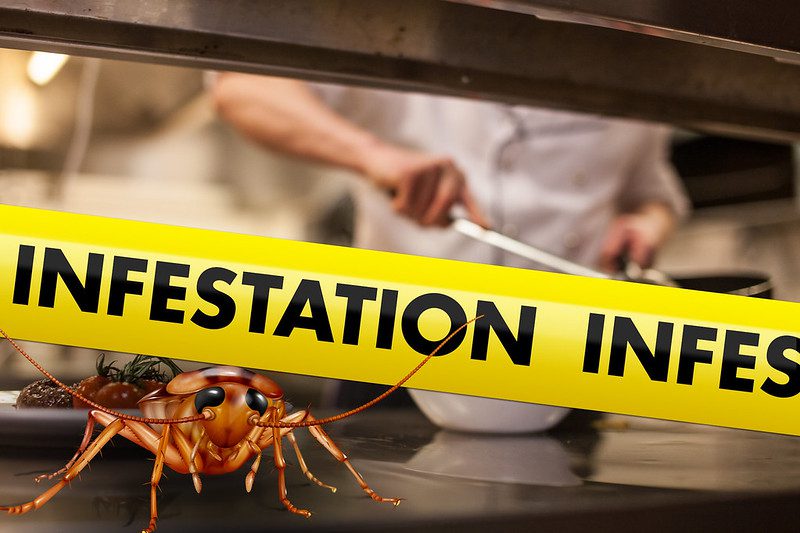
If you suspect a cockroach infestation, taking action as soon as possible is important to prevent the problem from worsening. A professional pest control company such as A1 Pest & Weed Control can help to identify the extent of the infestation and implement effective control and prevention measures.
The Dangers of Cockroaches: Health Risks and Allergies
Cockroaches can pose a number of health risks to humans and animals. They have been linked to the spread of diseases such as salmonella, typhoid fever, and cholera, as they are known to contaminate food and surfaces with their feces and secretions. Cockroaches can also trigger allergies and asthma attacks in some people, particularly in children.
Cockroach Reproduction
Cockroaches reproduce through a process called oviparity, in which females lay eggs that develop and hatch outside of the body. The female cockroach produces an egg capsule, also known as an ootheca, which contains several eggs. The ootheca is typically produced shortly after the female mates and is carried by the female until it is ready to be deposited.
The number of eggs in an ootheca varies depending on the species of cockroach but can range from a few to several dozen. The eggs are contained within a hard, protective casing and are typically deposited in a hidden, protected location, such as inside a wall or under a piece of furniture.
After the eggs are laid, they hatch into nymphs, which are small, wingless versions of adult cockroaches. Nymphs undergo several moults as they grow and eventually develop into adults. The entire process from egg to adult can take several months to several years, depending on the species of cockroach and environmental conditions.
Cockroaches are capable of producing several generations of offspring in a single year, making them a particularly difficult pest to control. Implementing effective control and prevention measures to manage cockroach infestations and prevent their reproduction is important.
The Life Cycle of Cockroaches: From Egg to Adult
Cockroaches have a simple metamorphosis, meaning that they go through three stages of development: egg, nymph, and adult. Female cockroaches lay eggs in an ootheca capsule, which contains several eggs. The eggs hatch into nymphs, which are small, wingless versions of adult cockroaches. Nymphs go through several moults, shedding their exoskeleton as they grow until they reach adulthood. The life cycle length varies depending on the species of cockroach and the environmental conditions, but most cockroaches reach adulthood within a few months to a year.
How to Prevent a Cockroach Infestation In a Commercial Environment: Tips and Tricks
There are several steps that businesses can take to prevent a cockroach infestation:
- Keep food and garbage in sealed containers: Cockroaches are attracted to food and will often infest areas where food is stored or prepared.
- Fix any plumbing leaks: Cockroaches need moisture to survive and will often infest damp or humid areas.
- Seal any gaps or cracks: Cockroaches can squeeze through small openings and will often enter a building through gaps or cracks in the walls, foundation, or roof.
- Regularly clean and sanitize: Cockroaches are attracted to dirty and cluttered environments, so it is important to regularly clean and sanitize areas where food is stored or prepared.
Commercial Remedies for Cockroach Control
Several commercial products are effective for controlling cockroaches, including bait stations, traps, and insecticides. Bait stations contain a food source that is laced with poison, which the cockroaches consume and spread to other cockroaches in their nest. Traps are physical devices that capture cockroaches, while insecticides are chemicals that are applied to surfaces to kill cockroaches. It is important to carefully follow the instructions on the label when using any of these products to ensure their effectiveness and to minimize the risk of harm to humans and pets.
Professional Pest Control for Cockroaches: Options and Considerations
If a cockroach infestation is severe or persistent, it may be necessary to hire a professional pest control company to handle the problem. Pest control professionals have the knowledge, experience, and equipment to eliminate a cockroach infestation effectively and can also help to prevent future infestations. When hiring a pest control company, it is important to do your research and choose a reputable company that is licensed and insured.
The Future of Cockroach Control: Emerging Technologies and Strategies
Several emerging technologies and strategies are being developed to control cockroaches, including pheromone-based attractants, gene editing, and biological control methods. Pheromone-based attractants use chemicals that mimic the natural scent of cockroaches to lure them into traps or bait stations. Gene editing involves altering the DNA of cockroaches to make them less able to reproduce or survive in certain environments. Biological control methods use natural predators, such as birds or other insects, to control cockroach populations.
The Importance of Cockroach Prevention and Management
Cockroaches are a common problem in many parts of the world, including Australia, and can pose a number of health risks to humans and animals. It is important to take steps to prevent a cockroach infestation and manage any existing commercial infestations. This can help ensure the environment’s safety and cleanliness and protect the health and well-being of those who work or visit the location. Professional pest control services can effectively eliminate and prevent cockroach infestations, particularly in cases where the infestation is severe or persistent.
People Also Ask
Does vinegar run roaches away?
Vinegar may help to repel cockroaches, as they dislike the strong, pungent smell. However, vinegar is not an effective method for eliminating a cockroach infestation and should not be relied upon as a sole means of control.
To use vinegar as a cockroach repellent, you can try the following methods:
- Mix equal parts vinegar and water in a spray bottle and apply the solution to surfaces where cockroaches are known to be present.
- Soak a rag or sponge in vinegar and place it in areas where cockroaches are seen.
- Place small bowls of vinegar in areas where cockroaches are seen.
While vinegar may help to deter cockroaches, it is important to note that it will not eliminate an infestation and should be used in conjunction with other control measures, such as sealing gaps and cracks, storing food properly, and maintaining a clean and clutter-free environment. If the infestation is severe or persistent, it is advisable to consult a professional pest control company for assistance.
Does baking soda Scare roaches away?
Baking soda may help to repel cockroaches, as they dislike the smell and taste of it. However, baking soda is not an effective method for eliminating a cockroach infestation and should not be relied upon as a sole means of control.
To use baking soda as a cockroach repellent, you can try the following methods:
- Mix equal parts baking soda and sugar and place the mixture in areas where cockroaches are seen. The sugar will attract the cockroaches, while the baking soda will kill them when ingested.
- Sprinkle baking soda on surfaces where cockroaches are known to be present.
- Mix equal parts baking soda and flour and place the mixture in areas where cockroaches are seen. The flour will attract the cockroaches, while the baking soda will kill them when ingested.
While baking soda may help to deter cockroaches, it is important to note that it will not eliminate an infestation and should be used in conjunction with other control measures, such as sealing gaps and cracks, storing food properly, and maintaining a clean and clutter-free environment. If the infestation is severe or persistent, it is advisable to consult a professional pest control company for assistance.
Does lavender repel roaches?
Lavender may help to repel cockroaches, as they dislike the strong, pungent smell. However, lavender is not an effective method for eliminating a cockroach infestation and should not be relied upon as a sole means of control.
To use lavender as a cockroach repellent, you can try the following methods:
- Place dried lavender flowers or lavender essential oil in areas where cockroaches are seen.
- Mix a few drops of lavender essential oil with water in a spray bottle and apply the solution to surfaces where cockroaches are known to be present.
- Place sachets of dried lavender flowers in areas where cockroaches are seen.
While lavender may help to deter cockroaches, it is important to note that it will not eliminate an infestation and should be used in conjunction with other control measures, such as sealing gaps and cracks, storing food properly, and maintaining a clean and clutter-free environment. If the infestation is severe or persistent, it is advisable to consult a professional pest control company for assistance.
What temperature kills cockroaches instantly?
Cockroaches are sensitive to high temperatures and can be killed instantly by exposure to temperatures above 50°C (122°F). This can be achieved through the use of boiling water, steam, or heat treatment.
Heat treatments involve raising the temperature of an infested area to a level that is lethal to cockroaches, typically around 50°C (122°F). This can be done using specialized equipment, such as heaters or thermal foggers, which generate heat and disperse it throughout the area. Heat treatments are an effective method for eliminating cockroach infestations and can be used in a variety of settings, including homes, businesses, and public buildings.
It is important to note that heat treatments can be dangerous if not carried out properly and should only be performed by trained professionals. If you suspect a cockroach infestation, it is advisable to consult a professional pest control company for assistance.
What can be mistaken for roaches?
Several insects can be mistaken for cockroaches, including:
- Beetles: Some beetles, such as the carpet beetle, can resemble cockroaches in size and shape. However, beetles have hard, exoskeletal wings and do not have the long, spiny legs that are characteristic of cockroaches.
- Crickets: Crickets can be mistaken for cockroaches due to their long, spiny legs and flattened bodies. However, crickets are typically smaller than cockroaches and have a more slender body shape.
- Centipedes: Centipedes are long, slender insects with many legs and flattened bodies. They can be mistaken for cockroaches due to their size and shape, but they have a distinct head, many simple eyes, and a pair of venomous claws.
- Silverfish: Silverfish are small, flat insects that are silver or grey in colour. They can be mistaken for cockroaches due to their size and shape, but they have long, slender bodies and three long, slender tails.
- Millipedes: They are similar in size and shape to centipedes but have a rounder body and shorter legs. They can be mistaken for cockroaches due to their size and shape, but they have a distinct head with two simple eyes and do not have venomous claws.
It is important to accurately identify the insect type present to control and eliminate any infestations effectively. If you are unsure of the type of insect that you are dealing with, it is advisable to consult a pest control professional for identification and control.
What kills cockroaches instantly?
Several methods can be used to kill cockroaches instantly, including:
- Insecticides: Many insecticides are specifically designed to kill cockroaches. These products come in various forms, including sprays, dust, and baits, and can be applied to surfaces or placed in areas where cockroaches are known to be present.
- Boric acid: Boric acid is a chemical that is toxic to cockroaches when ingested. It can be applied to surfaces or mixed with a bait to lure cockroaches into consuming it.
- Diatomaceous earth: Diatomaceous earth is a fine powder made from fossilized algae. When ingested, it is toxic to insects and can be applied to surfaces or mixed with bait to kill cockroaches.
- Hot water: Cockroaches are sensitive to high temperatures and can be killed instantly by exposure to hot water.
- Sticky traps are physical devices that trap cockroaches when they come into contact with a sticky surface. Once trapped, the cockroaches are unable to escape and will eventually die.
It is important to carefully follow the instructions on the label when using any of these methods to ensure their effectiveness and to minimize the risk of harm to humans and pets. If the infestation is severe or persistent, it is advisable to consult a pest control professional for assistance.
How a Commercial Pest Control Company In Melbourne Can Help Your Business
A commercial pest control company in Melbourne can help your business in a number of ways:
- Identification and assessment: A commercial pest control company can accurately identify the type of pests that are present in your business and assess the extent of the infestation. This information is crucial for developing an effective control and prevention plan.
- Control and elimination: A commercial pest control company has the knowledge, experience, and equipment to control and eliminate pests from your business effectively. This can help to protect the health and well-being of your employees, customers, and clients, as well as the reputation of your business.
- Prevention: A commercial pest control company can help to prevent future pest infestations by identifying and eliminating the conditions that attract pests and by implementing preventive measures, such as sealing gaps and cracks, storing food properly, and maintaining clean and clutter-free environments.
- Professional expertise: A commercial pest control company has the expertise to identify and resolve complex pest problems and can provide valuable advice and guidance on how to prevent future infestations.
- Convenience: A commercial pest control company can handle all aspects of the pest control process, from assessment to control and prevention, allowing you to focus on running your business.
Overall, a commercial pest control company in Melbourne can help protect your business’s health, safety, and reputation and provide peace of mind knowing that your pest problems are being effectively managed.
In conclusion, cockroaches are a common problem in many parts of the world, including Melbourne, Australia. They can pose a number of health risks to humans and animals and can be found in a wide range of habitats, including commercial buildings. There are several steps that businesses can take to prevent a cockroach infestation, including keeping food and garbage in sealed containers, fixing any plumbing leaks, sealing gaps and cracks, and regularly cleaning and sanitizing.
If a cockroach infestation is severe or persistent, it may be necessary to hire a professional pest control company to handle the problem. Several emerging technologies and strategies are also being developed to control cockroaches, including pheromone-based attractants, gene editing, and biological control methods. The importance of cockroach prevention and management cannot be overstated, as it helps to ensure the safety and cleanliness of the environment and protect the health and well-being of those who work or visit the location.
